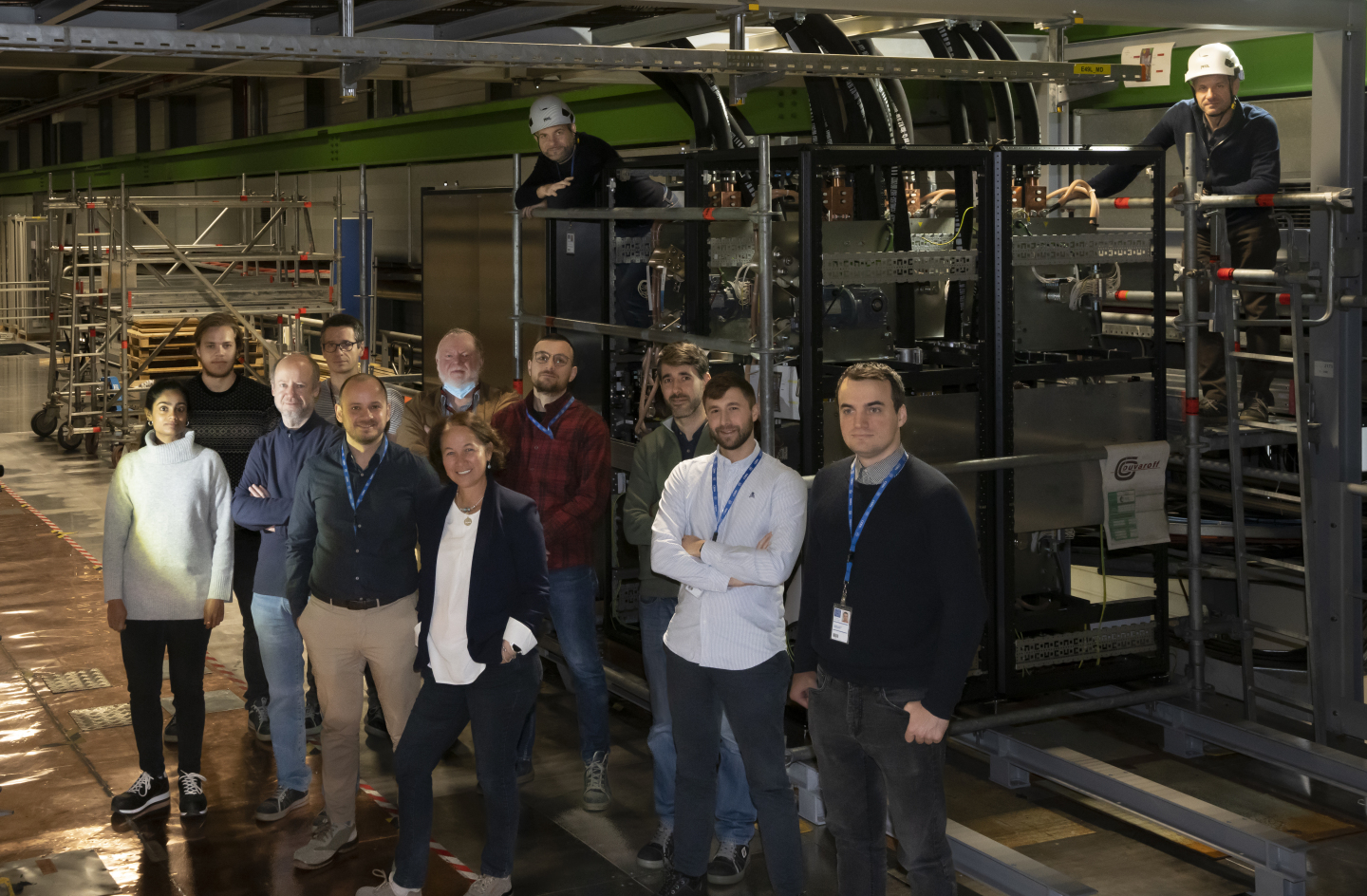As highlighted in the latest report on the HL-LHC IT String, the installation and operation of this test stand marks a very significant milestone for the High Luminosity LHC (HL-LHC) project. Most of the state-of-the-art technologies developed within the scope of the project will prove that they can effectively work in harmony, simulating diverse operational scenarios that will later routinely take place in the HL-LHC.
If 2022 was a busy year with multiple installations completed, 2023 is poised to be just as eventful, if not more so. In fact, the majority of the equipment destined for integration into the metallic platform has already been installed.
Installations successfully completed

Additionally, Water-Cooled cables (WCC) were procured and installed. These cables transport the energy required by the magnet system along the warm part of the high-current DC circuits, connecting Power Converters (PCs) and Energy Extraction Systems (EEs) to the CDBs.
In early 2023, the Energy Extraction Systems (EEs) were the first to arrive and were subsequently delivered and installed. The EEs are part of the new protection scheme designed for the inner triplet region, specifically for the corrector magnets. A total of 7 units were successfully positioned, with 6 allocated to the 2 kA circuits for the nested dipole orbit correctors and 1 designated for a 600 A circuit feeding a higher order corrector magnet in the corrector package (CP).
In parallel to the installation of the EE systems, the PCs for the different circuits such as the 18 kA, 14 kA, 2 kA, 600 A, 120 A and 35 A were delivered and installed. The modular nature of these PCs allows for a staged installation, where the power modules will be mounted in the racks only later in the year.
Furthermore, additional racks were installed on the platform to house various functionalities, including communications, measurements, and the remote alignment system.
During spring 2023 the primary campaign for the control cabling has been executed. These cables connect various equipment installed in the control racks zone to the magnet string, ensuring seamless communication and control. The installation process involved laying down over 300 cables.
Commissioning already started
The commissioning phase has started for the Cryogenic Distribution Line (SQXL) following its installation last year (Figure 5).
Various validation checks focusing on the line's vacuum are currently underway. The anticipated timeline for initiating operations under cryogenic conditions is set for summer 2023. The initial stages will involve mechanical and thermal validation, ensuring the system functions as intended. Subsequently, control loop tuning will be carried out to optimize performance and ensure precise control over the cryogenic processes.
The demineralized water distribution network, including the flexible pipes, has undergone successful pressure testing. This crucial step ensures the integrity and reliability of the system.
Navigating future challenges
As the installation phase progresses, a series of challenges lie ahead, all of which require careful consideration and strategic planning.
An important milestone is the upcoming short circuit test of the warm part of the circuit, which encompasses Power Converters, Water-Cooled Cables, Energy Extraction Systems, Circuit Disconnector Boxes, Air-Cooled Cables and high current DC Busbars. This pivotal test is scheduled to take place in November 2023 and has its own dedicated procedure.
Following this test, the focus will shift to the complex installation of the cold powering system, which includes the DFHX and the components of the superconducting link.
Through careful planning, meticulous execution, and adherence to safety measures, the team is well-equipped to overcome the challenges and achieve project success.
Find out more about the HL-LHC IT String: The HL-LHC’s IT String home gets ready, CDB installation in the HL-LHC IT STRING, participants HL-LHC IT String Day II, The IT String control room gets ready!
